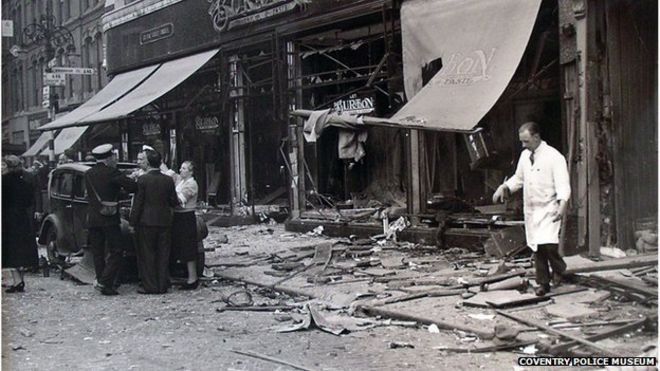A MEMORIAL is to be unveiled next month in Coventry city centre to the victims of the city’s worst terrorist attack, the Observer can reveal.
It will commemorate the five “forgotten victims” who lost their lives on August 25, 1939, when the IRA bombed Broadgate in the city centre during a busy lunchtime – shocking the nation.
The atrocity was somewhat buried by the weight of history and the Nazi’s ‘Blitz’ on Coventry the following year.
But now a memorial event on October 14 will see a stone laid in Unity Lawn by Coventry Cathedral.
The Coventry Observer understands relatives of those killed have been invited, including to a reception at Coventry Council House.
The five victims were John Corbett Arnott, aged 15, Elsie Ansell, 21, Rex Gentle, 30, Gwilym Rowlands, 50 and James Clay, 82.
In January 1939 the Irish Republican Army issued an ultimatum to the British Government – withdraw the army or face counter military action, with Coventry named among its targets.
History records the city’s electricity supply was supposed to be targeted, not civilians, under the IRA’s so-called ‘S-plan’ bombing campaign in England, which ran until March 1940.
Elsie Ansell was a shop assistant at Millet’s in nearby Cross Cheaping and was due to get married.
Gwilym Rowlands was a road sweeper. John Arnott and Rex Gentle worked at W H Smiths.
James Clay had left a business meeting in a nearby cafe.
The Historic Coventry website states: “Ironically, in the city that is regarded as its British birthplace, a bicycle played an instrumental part in the mass murder and carnage that shocked the nation.”
It explains: “James McCormack (alias James Richards), the leader of the IRA. unit operating in Coventry, and another unknown IRA man, visited the shop of the Halford Cycle Company in Smithford Street, where McCormack purchased a Halford ‘Karriwell’ – a tradesman type cycle built for Halford by the Birmingham Bicycle Company which had a carrier basket to the front of the handlebars.”
The 5lb bomb with an alarm clock as a timer – made in a house in Clara Street Coventry where McCormack was a tenant – was wrapped up in brown paper and left in the carrier basket of the bike against the kerb outside Astley’s shop.
The website states: “Many victims of terrorism or political conflict are totally forgotten about once the initial outrage or shock has died down.
“Just a week or so after the Coventry bomb, Great Britain declared war on Germany, and a year or so later our city was to suffer carnage on a much greater scale with the blitz of 14th November 1940. Perhaps these events helped play a part in effectively ‘burying’ the tragedy that took place in August 1939?”
James McCormick and Peter Barnes were hanged for their role in the bombing, although they did not plant the devise.
Joby O’Sullivan, from Cork, was never caught, despite claiming he planted the bomb.
An Irish journalist in the 1960s, Mike Burns, claimed O’Sullivan had told him the bomb was left in the busy street by “a total accident” and it was intended for the police station, but the wheels had become stuck in the tramlines.
the Midland Telegraph reported: “For some time, Broadgate resembled a miniature battlefield.”











